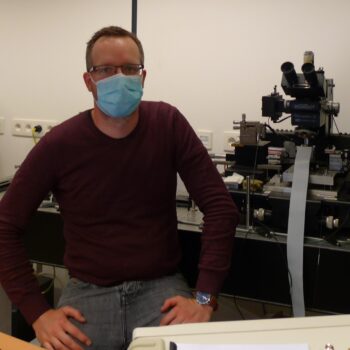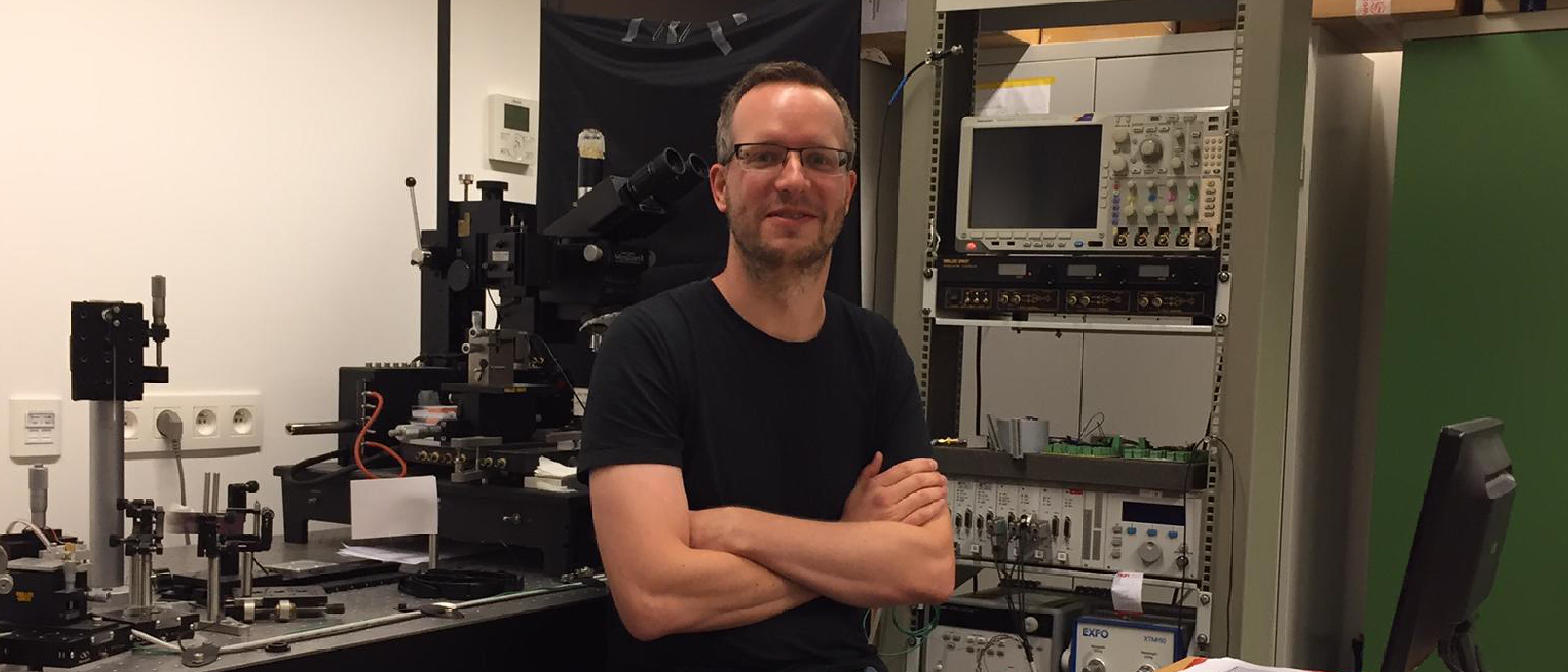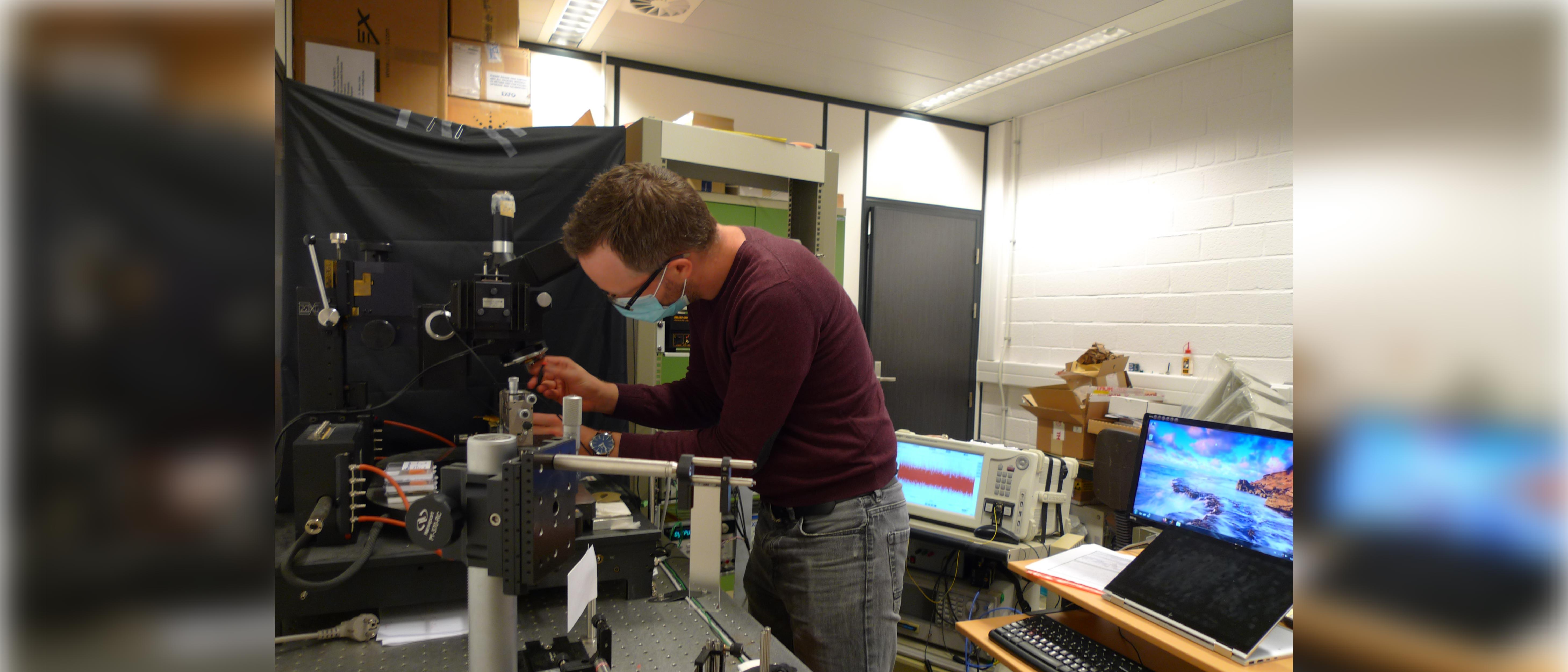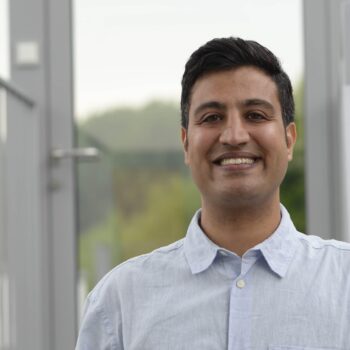COLOR'UP
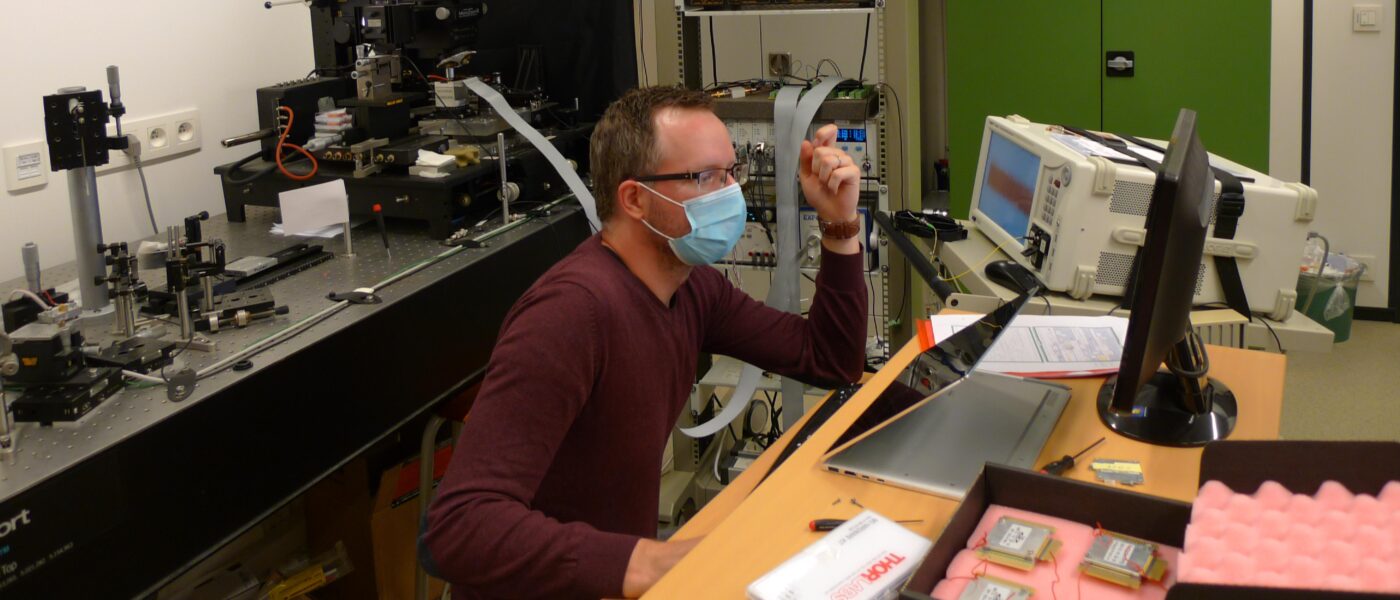
COLOR'UP is a project from VUB and B-PHOT researcher Prof. Dr. Martin Virte. The goal of the COLOR’UP project is to investigate how multi-color lasers can be used to process optical signals at ultra-high frequencies.
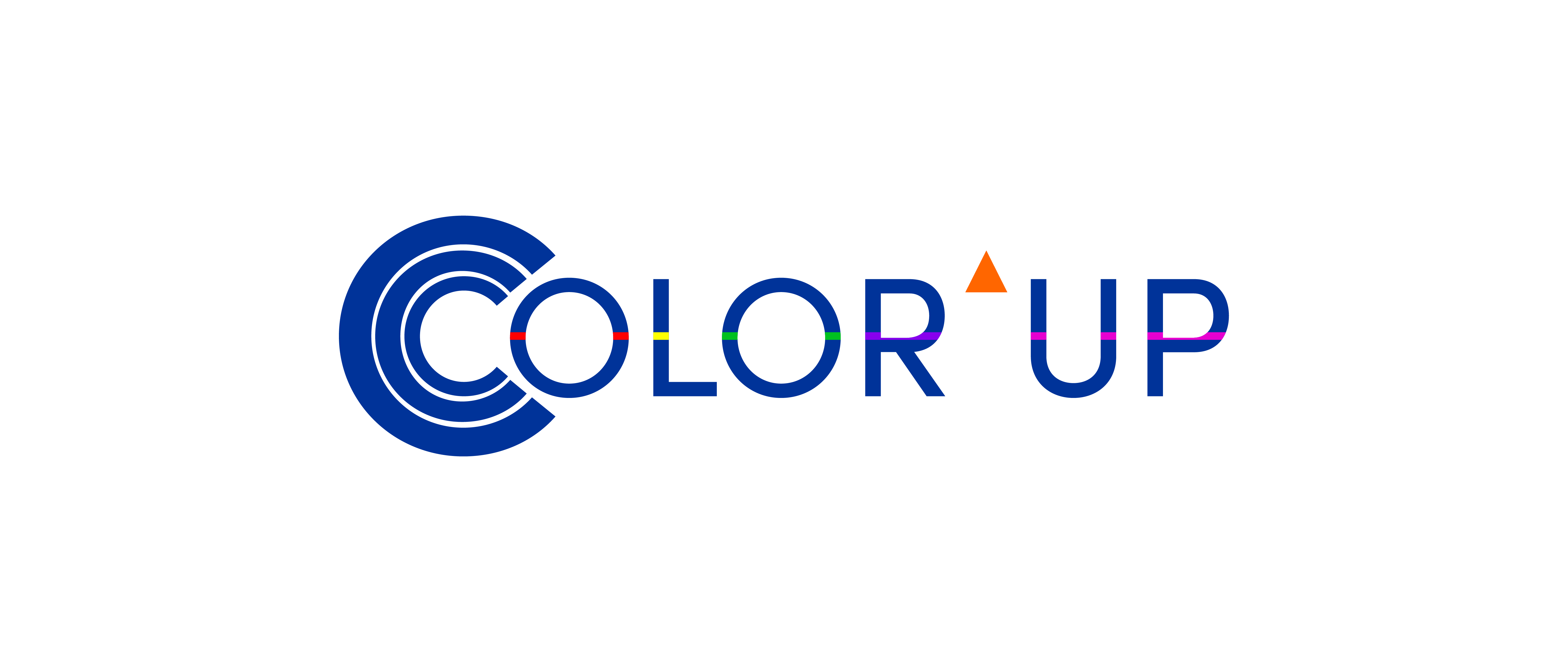
What we call the mm-wave frequency range - from 100 to 300 GHz - is a promising candidate to go beyond the 5G technology (which only goes up to 40 - 50 Ghz). The main issue is that mm-wave signals are very difficult to manipulate in electronics, but the biggest can be avoided using optical signals instead. That is how the field of “Microwave Photonics” emerged: to develop light-based solutions to help overcome the limitations of electronic systems.
On the other hand, lasers are often seen as “special” light bulbs that you just switch on or off. But, in fact, lasers are complex dynamical devices which can exhibit various kinds of behavior: from controlled pulses, oscillations to full-blown chaos. In multi-color lasers, the different wavelengths are generated by distinct emission processes, but they are all nonlinearly coupled. By exploiting this coupling mechanism, it thus becomes possible to perform various processing tasks via the laser’s own physical behavior.
With the Starting Grant from the ERC, Virte and his team will be able to design, realize and investigate the capability of such a system in processing sub-THz signals. Naturally, this is also a high-risk project as numerous challenges remain. But the support of the ERC provides the ideal framework to succeed.

Abstract
MicroWave Photonics (MWP) has been delivering on-chip devices with outstanding performances to answer the demand of Information and Communication Technologies for always faster, more efficient and more compact systems. Yet, some stringent limitations form a roadblock for disruptive specifications: for instance, on-chip MWP frequency filters hardly perform beyond 60 GHz, whereas the technology and applications require frequencies in the sub-THz range from 100 GHz to several THz. This frequency band will directly support future ultra-fast telecom systems, but also sensing techniques such as THz spectroscopy e.g. for food contaminant detection or mm-precision RADARs for robotic systems.
With COLOR'UP, my goal is to remove this frequency roadblock by exploring and implementing on-chip a radically new concept exploiting the nonlinear dynamics of multi-colour lasers. These lasers naturally generate a set of sharp beat-notes in the sub-THz range corresponding to the frequency separation between the different wavelengths. Injecting an optical beam in a multi-colour laser with a modulation at well-chosen frequencies can lead to injection-locking of all wavelengths simultaneously. Spectral components that are not matching the beat-notes will however not be picked up and will be filtered out in the laser output.
In this project, I will demonstrate that this effect can be exploited to create all-optical on-chip MWP bandpass filters with the capability to cover the entire sub-THz range from tens of GHz, up to a few THz. My goals are four-fold: (1) design and realize multi-colour lasers with tailored spectra to achieve filtering at precise frequencies (2) study the underlying filtering mechanism to optimize the filter performances (3) develop on-chip control techniques based on optical feedback to control the filter properties (4) make a Proof-of-Concept demonstration of the filter on an InP photonic integrated circuit emitting in the telecom band, around the 1.55 mm wavelength.

European Research Council
The ERC Starting Grant from the European Union is a highly-coveted funding that helps individual scientists to build their own teams and conduct pioneering research across all disciplines. The ERC provides substantial funding to selected researchers so that they can work on their most ambitious and disruptive ideas. The ERC is not imposing any direction of research.

